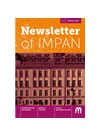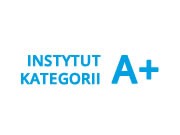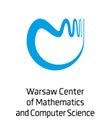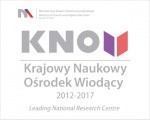Non-commutative groupoids obtained from the failure of 3-uniqueness in stable theories
Tom 249 / 2020
Streszczenie
Given an arbitrary connected groupoid $\mathcal {G}$ with its vertex group ${\mathcal G} _a$, if ${\mathcal G} _a$ is a central subgroup of a group $F$, then there is a canonical extension $\mathcal {F}=\mathcal {G}\otimes F$ of ${\mathcal G} $ in the sense that $\operatorname{Ob} ({\mathcal G} )=\operatorname{Ob} ({\mathcal F} )$, $\operatorname{Mor} ({\mathcal G} )\subseteq \operatorname{Mor} ({\mathcal F} )$, and $F$ is isomorphic to all the vertex groups of ${\mathcal F} $.
From the failure of $3$-uniqueness of a strong type $p$ over $A=\operatorname{acl} ^{\operatorname{eq} }(A)$ in a stable theory $T$, a canonical finitary connected commutative groupoid ${\mathcal G} $ with the binding group $G$ was $A$-type-definably constructed by John Goodrick and Alexei Kolesnikov (2012). In this paper we take a certain (possibly non-commutative) automorphism group $F$ where $G$ is embedded centrally (so inducing $\iota _a:{\mathcal G} _a\to Z(F)$), and show that the abstract groupoid $\mathcal {G}\otimes F$ lives $A$-invariantly in models of $T$. More precisely, we $A$-invariantly construct a connected groupoid ${\mathcal F} $, isomorphic to $\mathcal {G}\otimes F$ as abstract groupoids, satisfying the following:
(1) $\operatorname{Ob} ({\mathcal F} )=\operatorname{Ob} ({\mathcal G} )$, and $\operatorname{Mor} ({\mathcal F} )$ and composition maps are $A$-invariant (i.e., described by infinite disjunctions of conjunctions of formulas over $A$), so that an $A$-automorphism of a model of $T$ induces a groupoid automorphism of ${\mathcal F} $.
(2) There is an $A$-invariant faithful functor $I:{\mathcal G} \to {\mathcal F} $ which is the identity on the objects, and $I({\mathcal G} _a)= i_a\circ \iota _a$, where $i_a$ is a canonical group isomorphism from $F$ onto a vertex group ${\mathcal F} _a$ of ${\mathcal F} $.
An automorphism group approximated by the vertex groups of the non-commutative groupoids is suggested as a “fundamental group” of the strong type $p$.









